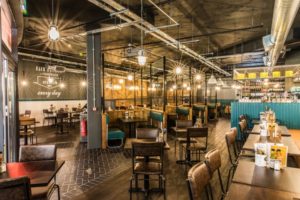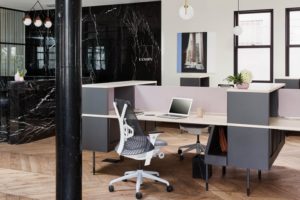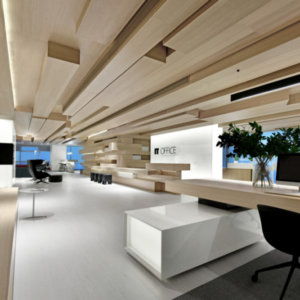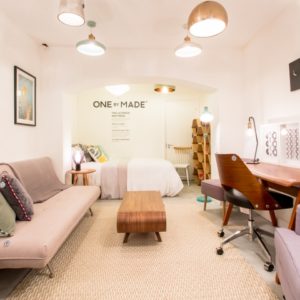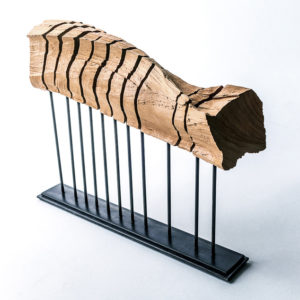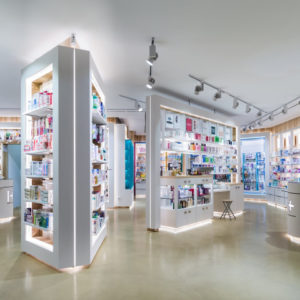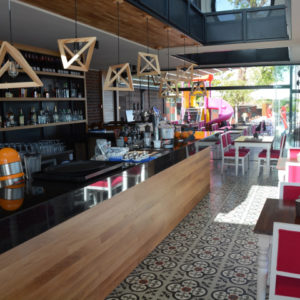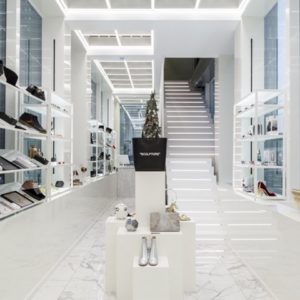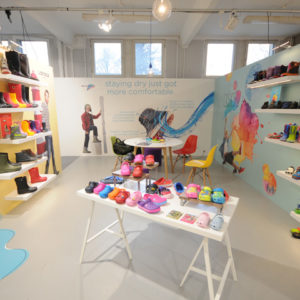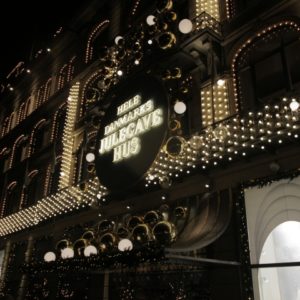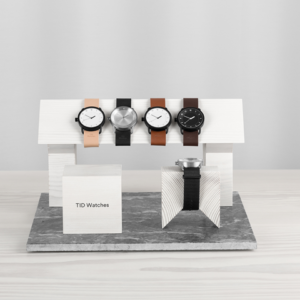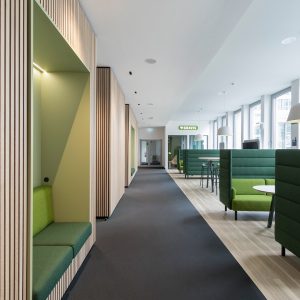
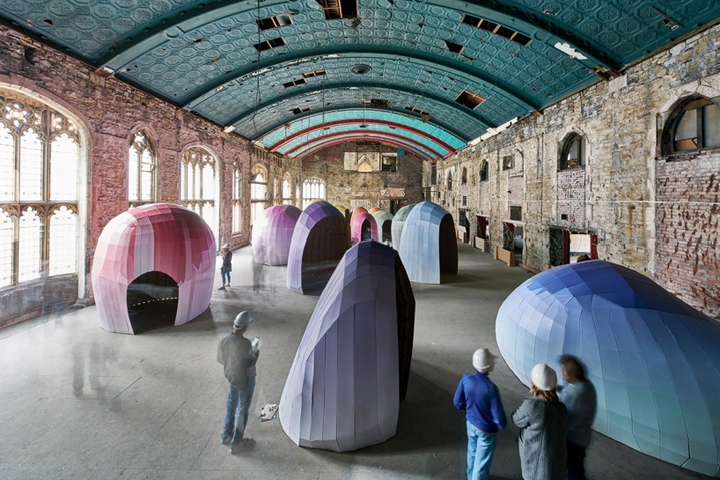

The faded glory of a vast, abandoned cinema and 18th Century cotton exchange in Lancashire, UK, had its lost nobility temporarily revived as the backdrop to the striking work of Manchester-based creative Studio Lazerian. Titled “chromatogram”, the installation is composed of fifteen, ten feet tall, walk-in “pods” fabricated entirely from precision-cut and individually printed cardboard modules. Commissioned as part of the “art in manufacturing” series for the national “Festival of Making” in Blackburn, Lazerian borrowed ideas, materials and expertise from the Cardboard Box company to develop the invasion of indefinable “foreign bodies” into a historic, formerly inaccessible building. Chromatogram, defined as a graphic representation of the separation of components, is a physical expression of workers’ unusual semi-isolation in today’s factory.

This notion was brought to light by lazerian’s founder, Liam Hopkins, who undertook a three month residency with the company for the ground breaking series of commissions. “Art in manufacturing” also paired leading artists with factories in Pennine Lancashire to encourage a creative expression of the histories, innovation and expertise of each, as well as amongst people who work there. Noting that workers were entirely dependent on each other, yet worked largely alone in distinct sectors, Hopkins created cardboard structures that depict that relationship. Using irregular and organic forms, the interactive work purposely skewed the expected, strictly angular form of a cardboard box. With a practice founded on the versatility of overlooked materials – Hopkins looked further into the capabilities of the cardboard box company to print each component with a striking, gradient color scheme.
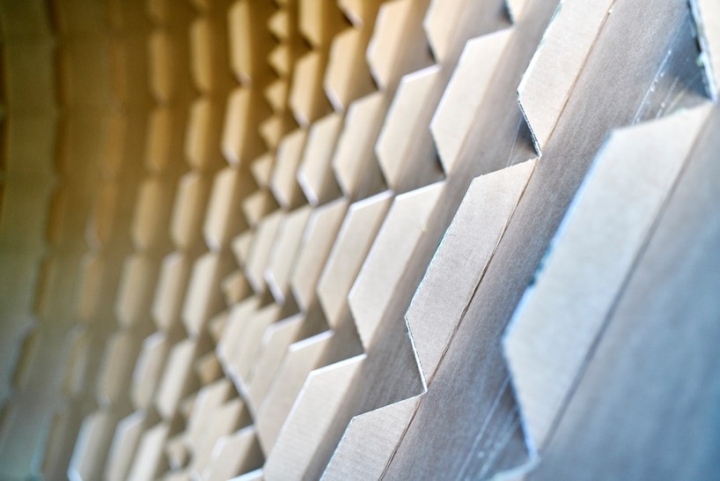
“Having worked extensively with cardboard, from developing furniture and architectural installations to collectible, small-scale sculpture, the strength and versatility of the material itself presents exciting possibilities… the result is a stark contrast between modern and archaic, meticulously planned design and that which only abandonment, nature and time has created”, elaborates Hopkins. Elena Gifford, co-founder of the national festival of making states: “The Art in Manufacturing” commissions were designed to bring not only the public closer to their making heritage and the hidden expertise that hides within anonymous factories in their locality, but also for the employees of manufacturers to creatively explore the elements that make up their working lives. The installation of “chromatogram” is just one example of how not only unexpected locations can be transformed by art, but how far ideas brought from industrial production lines can be brought to create something truly and unexpectedly original.”
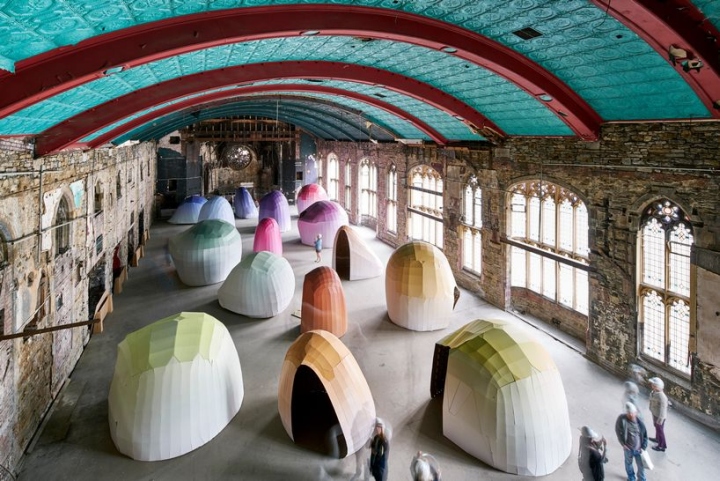
Funded by the heritage lottery fund and produced by the national festival of making and community-led arts commissioners, Super Slow Way, “Art in Manufacturing” seeks to develop the ideas of artists in unfamiliar environments and create engaging and accessible new work. It also encourages investigation into Britain’s manufacturing heritage, specifically that of Lancashire with direct engagement from staff members in each participating company. “Art in Manufacturing” has exposed the art at play in countless, largely invisible, factories across this area where hundreds of people embark each day on creative tasks, undertaken with remarkable attention to detail – resulting in the production of the beautiful, the delicious and the complex, from the most delicate to the most durable products on earth.

These people, often coming from generations that have worked in these industries, have very generously imparted their knowledge to the nine artists who, in turn, have shone a spotlight of excitement and curiosity onto their formidable skills and dedication”, Laurie Peake, director of super slow way, expresses. This was the UK’s first ever festival of making, taking place as the first such national celebration of its kind — attracting 30,000 people to blackburn. The project was made possible thanks to a new festival of making community interest company : it is a collaborative venture involving designer, Wayne Hemingway MBE, festival producers, Déco Publique and creative place-making social enterprise, Placeshakers.
Design: Lazerian
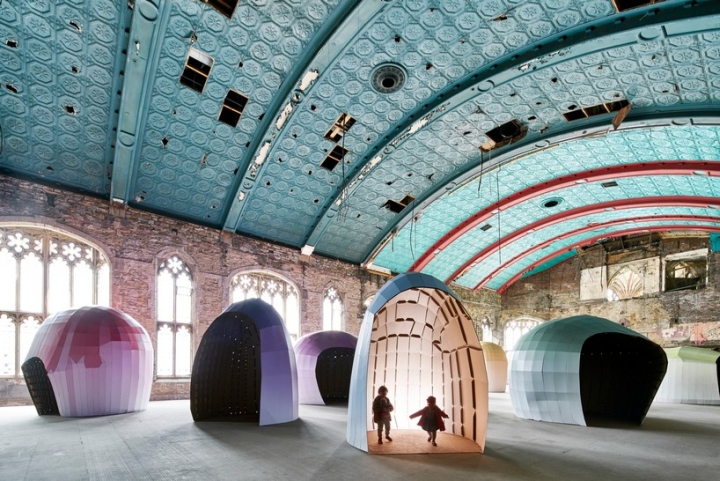
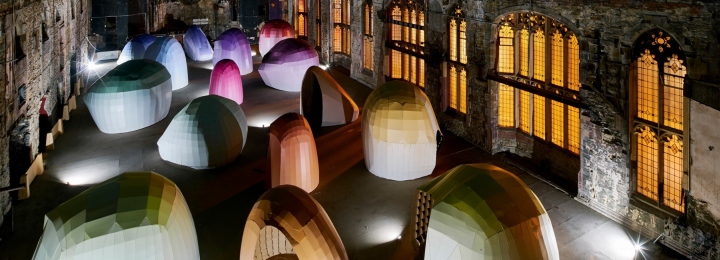
http://www.designboom.com/art/lazerian-chromatogram-art-in-manufacturing-uk-05-12-2017/






Add to collection
